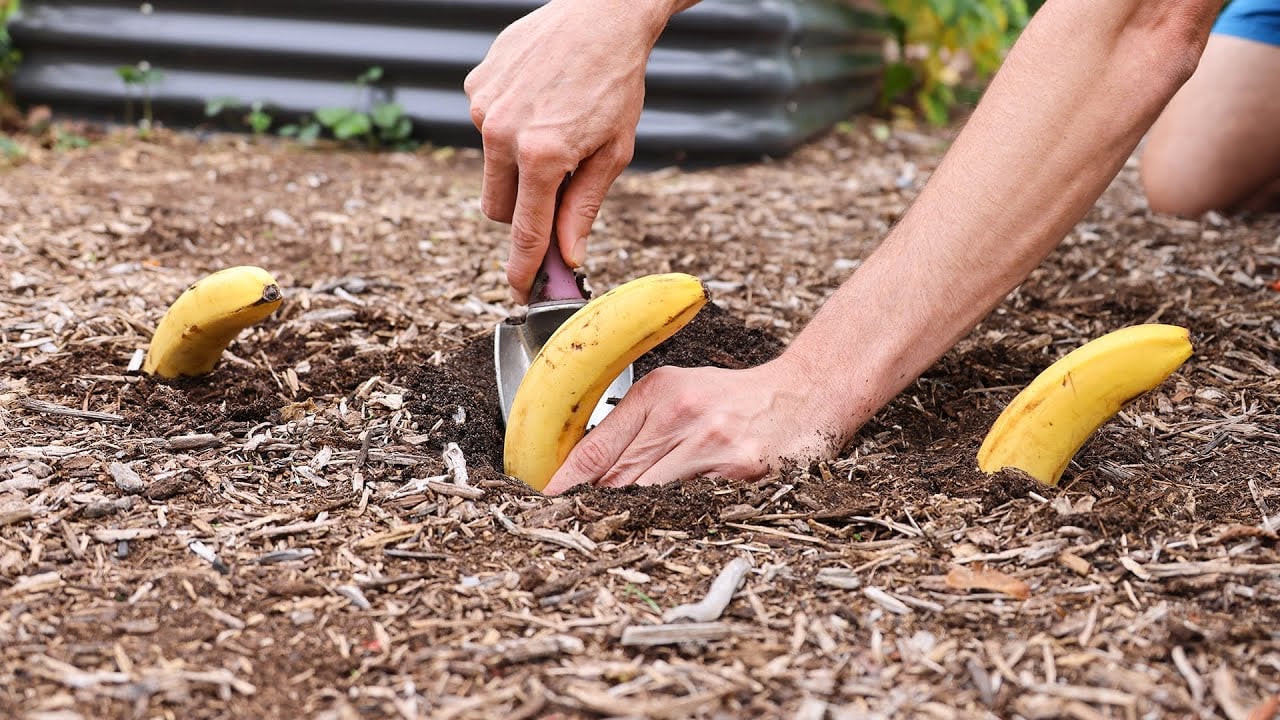
We hear many myths about the power of bananas on plant growth and vegetable crops, but are they true? Well, the only way to find out is to try them out! Can this exotic fruit really enhance your harvests? And, if so, how can you do it in an efficient way? How does it deed the soil of your beds and garden?
For example, I have seen hacks that say you should liquidize bananas to add potassium to the soil, but honestly, I find it a waste of electricity; just chop it up and it will decompose… But it’s true, bananas contain 385 mg of potassium per 100 grams on average, which, compared with the 107 mg of apples is quite a lot!
So, I carried out a little experiment, and I would like to share the results with you!
The Theory: Why Bananas Are Good to Fertilize Plants and Crops

The key point of this widespread theory is that bananas are very rich in potassium, the K element in the NPK fertilizer description. And it is essential to the health of plants – decorative or vegetables – and also used for fruiting.
An average medium banana will have 425 mg of potassium, as it is more than 100 grams, which is a bit more than half a papaya (390 mg), the second comer. But unlike the other exotic fruit, bananas are cheap, readily available and we often allow them to go off…
You may like black bananas as I do (and Queen Elizabeth II did!), but they get to a point where they become mushy and even a bit acidic. So, what can you do with them? Use the to feed your vegetables with some extra potassium.
And I tried it.
Two Bananas and a Tomato
I had two big bananas that had gone off, though not completely, so, I decided to try them as potassium rich fertilizer for tomatoes. How to do it? And how to see if this experiment worked?
I was about to plant my tomatoes last year, and I chose to give bananas to one of the, while I left the others, of the same variety, without… So, I could see the difference.
They were all Super Sweet 100 cherry tomatoes, and I had three plants of this variety, so I used two as a control group, as scientists say. It is an indeterminate cultivar, so it fruits for a long time, to the end of the season, and this gave me more time to check the results, and it also gave me a chance to see if these results were long lasting.
Burying the Bananas as Food for My Tomato Plant
So, I dug the hole to plant my Super Sweet 100 cherry tomato seedling, and then I chopped up the two bananas roughly, peel and all, and I put them at the bottom.
Next, I covered them with some garden soil, and I made sure that it was simple garden soil, just in case the compost or other fertilizers or soil amendments would affect the results.
I planted the seedling, filling the gaps with ore garden soil, then I mulched and watered the tomato plant.
Finally, I put a tag with “banana” on it, just in case I confused this plant with the other two later on.
I did the same with the control seedlings, just without the chopped bananas. And then I waited…
The First Observation on the “Banana Tomato” – Is It a Result?
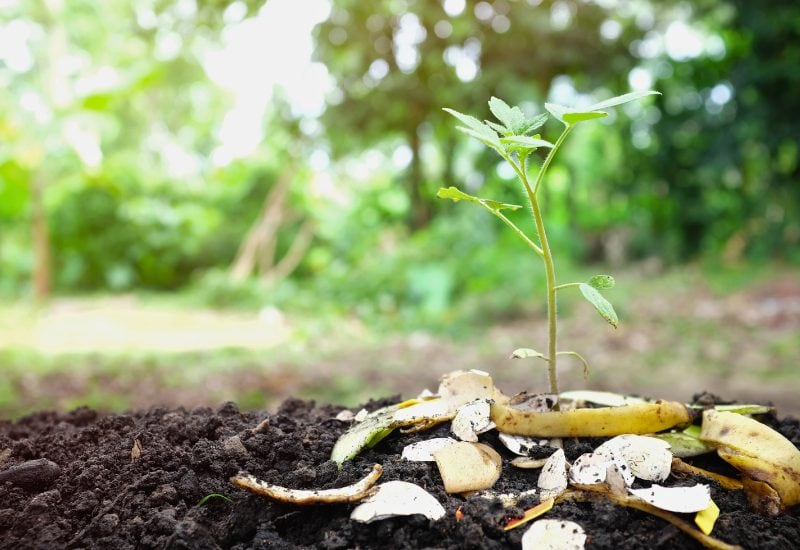
After a few weeks, I noticed that the tomato I had fed with bananas looked a bit stronger. The stems were thicker, and the foliage too. In fact, it showed no signs of illness whatsoever. True, nor did the other two plants, which were now reaching about 2 feet tall (60 cm), but this variety can reach 8 feet in height (2.4 meters), and these were early stages.
But the control tomatoes’ stems were thinner, and the leaves not as lush.
Two Months Later, the First Crop from My “Banana Tomato”, and the Others
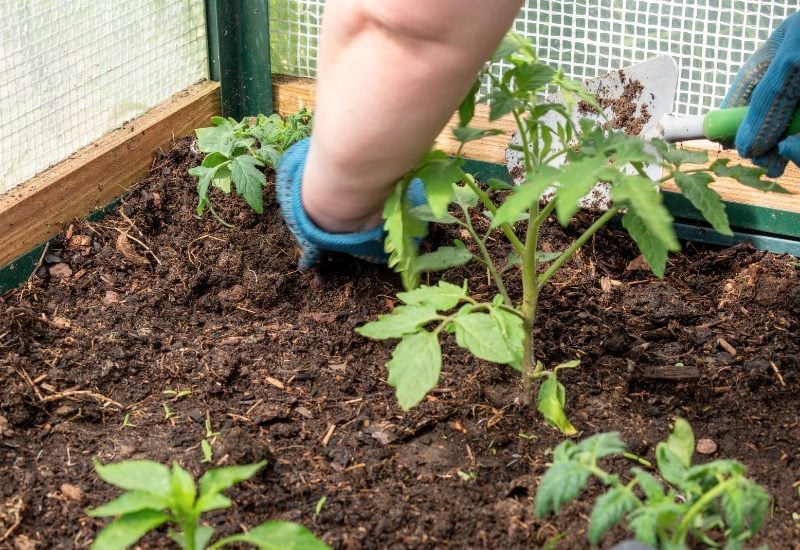
About two months in, all three plants started fruiting! But I had already noticed a little difference when they flowered: the plant fed with bananas had about 10% more blossoms…
Now, Super Sweet 100 cherry tomatoes give you long drooping clusters of 15 to 25 tomatoes each, and the banana fed one tended to give me the maximum number.
I didn’t see a difference in ripening time, nor in size at first, but the banana fed tomato plant gave me a 10% bigger crop! This is a rough estimate, keep in mind, mine wasn’t an exact scientific study…
Does Feeding Bananas to Tomatoes Affect the Fruits?
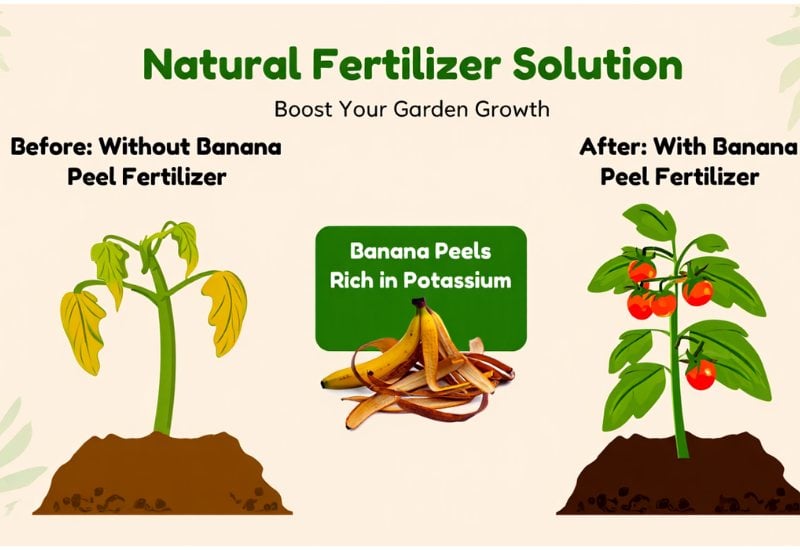
As time went by, I could observe another element: the quality of the fruits! The tomatoes fed with bananas were all red and fully ripe, while on some of the other plants they tended to orange at the top.
So, it looks like feeding bananas to tomatoes gives you more uniformly ripe fruits. We can suppose that potassium gives us healthy plants, and they can push energy into ripening their fruits more easily.
The Big Effect of Feeding Bananas to Tomatoes Only Came Later
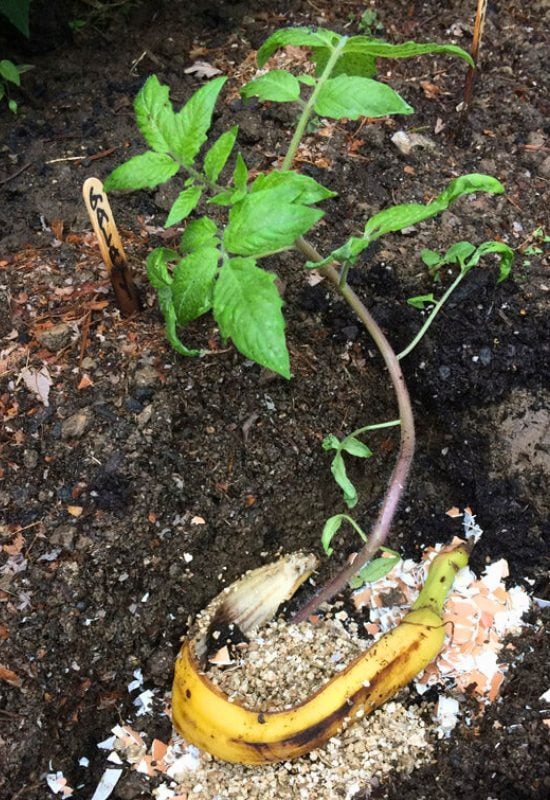
However, the biggest difference I noticed only came later on, when the season was coming to a close. While the harvest from the control plants dropped really significantly as days got colder, the banana fed tomato kept producing significantly bigger clusters of fruits. It still had the energy to go!
What’s more, the two other plants really strived to bring the tomatoes to maturity, but our potassium rich champion still managed a darker color, more towards red than orange…
Conclusion: The Benefits of Feeding Bananas to Tomatoes
Now, keep in mind that this was just a small, amateurish experiment, so it does not have statistical or scientific value (though it was fun to do), but from it, we can see that:
- Banana fed tomatoes grow into healthier plants.
- Banana fed tomatoes give bigger crops (but not fruits).
- Tomatoes grown on banana fed plants ripen better.
- Banana fed plants fruit more later in the season.
- Banana fed tomato fruits ripen better later in the season.
With one single tomato plant, it could be a case, but you can check it out yourself, and how? When you plant tomatoes, feed them some old bananas too, and carry out this fun experiment yourself!

Written By
Amber Noyes
Amber Noyes was born and raised in a suburban California town, San Mateo. She holds a master’s degree in horticulture from the University of California as well as a BS in Biology from the University of San Francisco. With experience working on an organic farm, water conservation research, farmers’ markets, and plant nursery, she understands what makes plants thrive and how we can better understand the connection between microclimate and plant health. When she’s not on the land, Amber loves informing people of new ideas/things related to gardening, especially organic gardening, houseplants, and growing plants in a small space.

